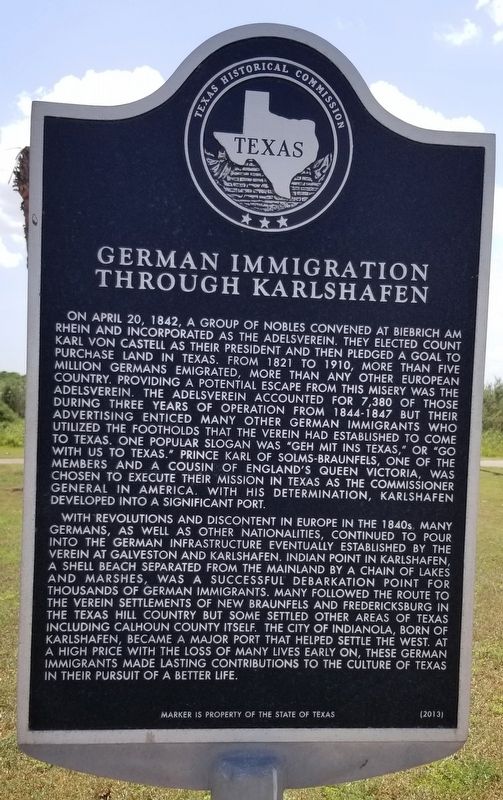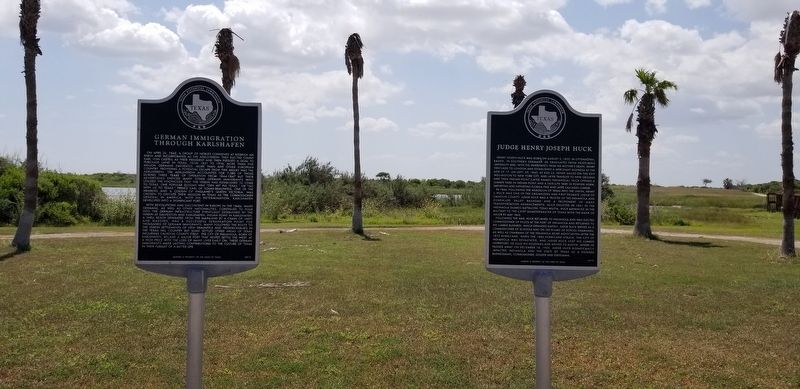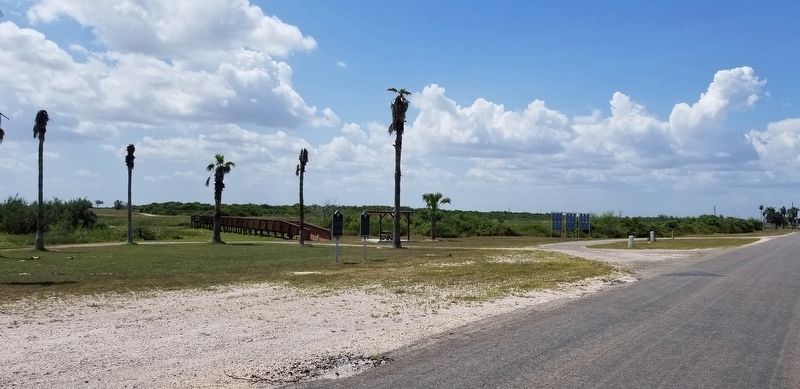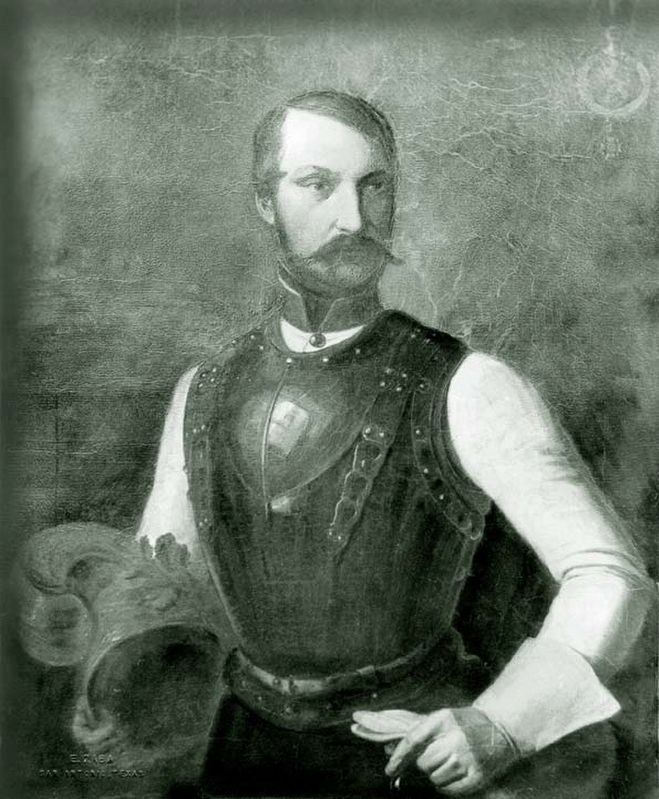Near Indianola in Calhoun County, Texas — The American South (West South Central)
German Immigration Through Karlshafen
With revolutions and discontent in Europe in the 1840s, many Germans, as well as other nationalities, continued to pour into the German infrastructure eventually established by the Verein at Galveston and Karlshafen. Indian Point in Karlshafen, a shell beach separated from the mainland by a chain of lakes and marshes, was a successful debarkation point for thousands of German immigrants. Many followed the route to the Verein settlements of New Braunfels and Fredericksburg in the Texas Hill Country but some settled other areas of Texas including Calhoun County itself. The city of Indianola, born of Karlshafen, became a major port that helped settle the west. At a high price with the loss of many lives early on, these German immigrants made lasting contributions to the culture of Texas in their pursuit of a better life.
Erected 2013 by Texas Historical Commission. (Marker Number 17800.)
Topics. This historical marker is listed in this topic list: Settlements & Settlers. A significant historical date for this entry is April 20, 1842.
Location. 28° 32.726′ N, 96° 31.227′ W. Marker is near Indianola, Texas, in Calhoun County. Marker is on North Ocean Drive, one mile north of State Highway 316, on the left when traveling north. The marker is located at a small roadside pullout. Touch for map. Marker is in this post office area: Port Lavaca TX 77979, United States of America. Touch for directions.
Other nearby markers. At least 8 other markers are within walking distance of this marker. Judge Henry Joseph Huck (here, next to this marker); The War Between U.S. and Mexico (within shouting distance of this marker); The German Emigration Company (within shouting distance of this marker); Harris & Morgan's Steamship Yacht (within shouting distance of this marker); California Gold Fields
(within shouting distance of this marker); Name Change (within shouting distance of this marker); A Steady Movement of European Immigrants (within shouting distance of this marker); A Beef Canning Plant (within shouting distance of this marker). Touch for a list and map of all markers in Indianola.
Also see . . .
1. Adelsverein.
The Adelsverein, also known as the Mainzer Verein, the Texas-Verein, and the German Emigration Company, was officially named the Verein zum Schutze deutscher Einwanderer in Texas (Society for the Protection of German Immigrants in Texas). Provisionally organized on April 20, 1842, by twenty-one German noblemen at Biebrich on the Rhine, near Mainz, the society represents a significant effort to establish a new Germany on Texas soil by means of an organized mass emigration. Source: The Handbook of Texas(Submitted on September 21, 2021, by James Hulse of Medina, Texas.)
2. Germans.
The largest ethnic group in Texas derived directly from Europe was persons of German birth or descent. As early as 1850, they constituted more than 5 percent of the total Texas population, a proportion that remained constant through the remainder of the nineteenth century. Intermarriage has blurred ethnic lines, but the 1990 United States census revealed that 1,175,888 Texans claimed pure and 1,775,838 partial German ancestry, for a total of 2,951,726, or 17˝ percent of the total population. Source: The Handbook of Texas(Submitted on September 21, 2021, by James Hulse of Medina, Texas.)
Credits. This page was last revised on September 21, 2021. It was originally submitted on September 20, 2021, by James Hulse of Medina, Texas. This page has been viewed 346 times since then and 63 times this year. Photos: 1, 2, 3, 4. submitted on September 21, 2021, by James Hulse of Medina, Texas.



